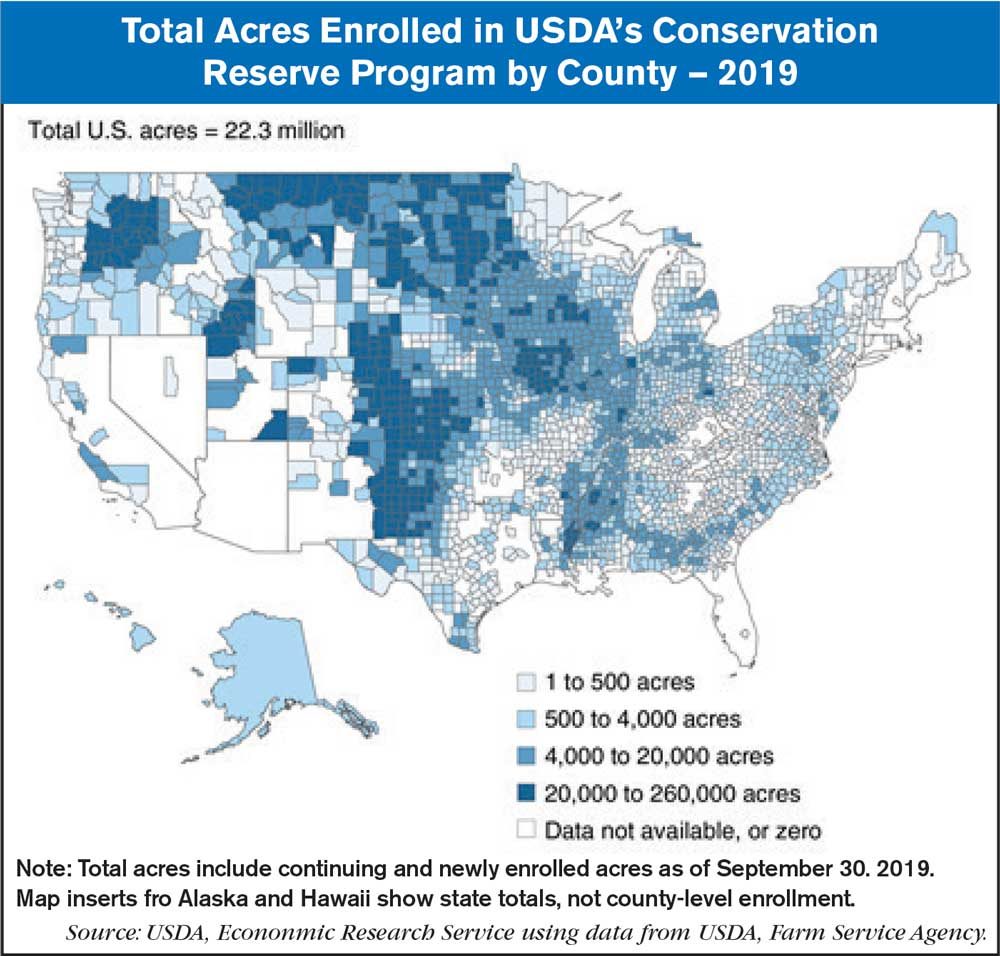USDA’s Conservation Reserve Program (CRP) covered about 22.3 million acres of environmentally sensitive land at the end of fiscal 2019. With an annual budget of roughly $1.8 billion, CRP was USDA’s largest single conservation program in terms of spending that year. CRP enrollees receive annual rental and other incentive payments for taking eligible land out of production for 10 years or more. Voluntary retirement of cropland under CRP provides numerous environmental benefits related to soil erosion, water quality, wildlife habitat provision, and other environmental services.
As of January 2020, total CRP enrollment was 21.9 million acres, with a large share of that land located in the Plains (from Texas to Montana), where rainfall is limited and much of the land is subject to potentially severe wind erosion. Smaller concentrations of CRP land were found in eastern Washington, southern Iowa, northern Missouri, and the Mississippi Delta. Approximately 5.4 million acres will expire in September 2020. CRP General Signup 54, which concluded in February 2020, accepted over 3.8 million acres for enrollment in October 2020. Acreage continues to be accepted under continuous signup. This chart updates data found in the Economic Research Service data product, Ag and Food Statistics: Charting the Essentials, updated March 2020.




![[Technology Corner] What an OEM Partnership Means to an Autonomy Startup](https://www.agequipmentintelligence.com/ext/resources/2024/09/26/What-an-OEM-Partnership-Means-to-an-Autonomy-Startup.png?height=290&t=1727457531&width=400)
Post a comment
Report Abusive Comment